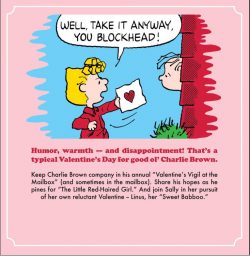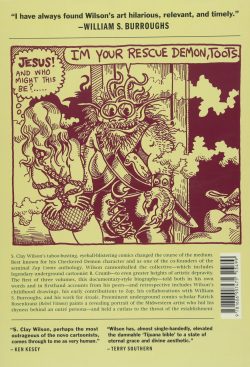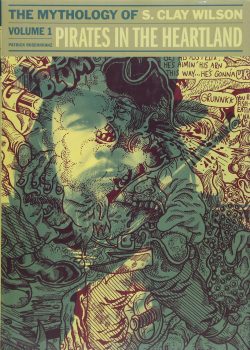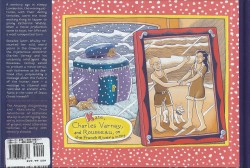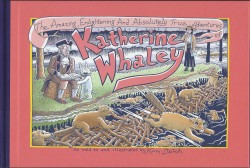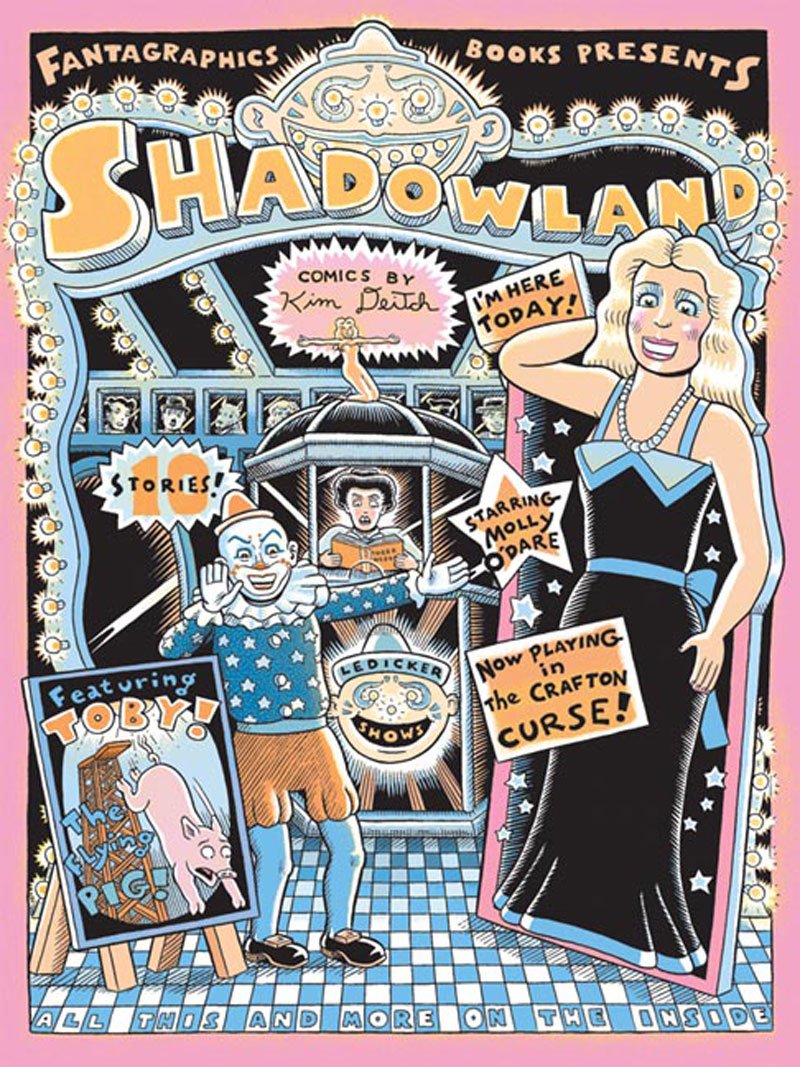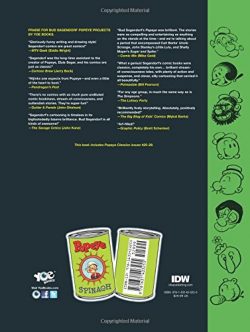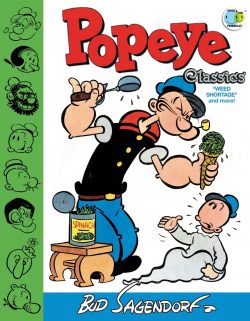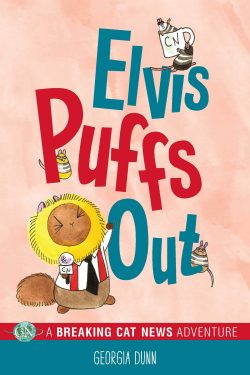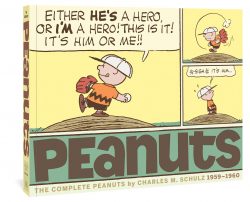
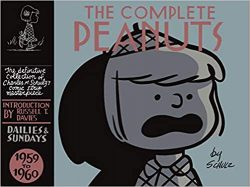
By Charles M. Schulz (Canongate Books/Fantagraphics Books)
ISBN: 978-1-84767-149-3 (Canongate HB) 978-1-60699-921-9 (Fantagraphics PB)
Peanuts is unequivocally the most important comics strip in the history of graphic narrative. It is also the most deeply personal.
Cartoonist Charles M Schulz crafted his moodily hilarious, hysterically introspective, shockingly philosophical surreal epic for half a century: 17,897 strips from October 2nd 1950 to February 13th 2000. He died from the complications of cancer the day before his last strip was published…
At its height, the strip ran in 2,600 newspapers in 75 countries, translated into 21 languages. Many of those venues are still running perpetual reprints, as they have ever since his departure. Attendant book collections, a merchandising mountain and television spin-offs made the publicity-shy artist a billionaire.
None of that matters. Peanuts – a title Schulz loathed, but one the syndicate forced upon him – changed the way comics strips were received and perceived: proving cartoon comedy could have edges and nuance as well as pratfalls and punchlines.
Following a Foreword of fun and frank shared reminiscences between editor Gary Groth and mega star Whoopi Goldberg, the timeless times of play, peril and psychoanalysis resume as ever in marvellous monochrome, but this time major changes are in motion as the feature enters its true glory days …
Our focus is quintessential inspirational loser Charlie Brown who, with increasingly high-maintenance, fanciful mutt Snoopy, remains at odds with a bombastic, mercurial supporting cast, all hanging out doing kid stuff.
As always, daily gags centre on playing, pranks, and a seasonal selection of sports; musical moments, teasing, making baffled observations and occasionally acting a bit too much like grown-ups. However, with this tome, the themes and tropes that define the series (especially in the wake of all those animated TV specials) are truly bedded in.
Mean girl Violet, prodigy Schroeder, “world’s greatest fussbudget†Lucy and her off-kilter little brother Linus and dirt-magnet “Pig-Pen†are fixtures sufficiently fleshed out and personified to generate jokes and sequences around their own foibles, but a new disruptive force is introduced. The existential angst of Charlie Brown is magnified by more responsibility with the coming of his new baby sister Sally…
Resigned to his role as eternal loser and singled out by fate and the relentless, diabolical Lucy – who now intensifies and monetises her spiteful verve with a 5¢ walk-in psychoanalysis booth – the round-headed kid really endures the trials of Job from now on. His attempts to fly a kite or kick a football are perpetually sabotaged, and he faces from all the females in his life constant face-to-face reminders of how rubbish he is. Can this new one in his own house be any different?
Other notable events include the first instances of Linus’ doomed relationships: primarily with alternative mythical entity The Great Pumpkin, but also unattainable, equally unseen schoolteacher/inamorata Miss Othmar…
Wonder beagle Snoopy increases his strange development in all ways. His extended Cold War duel for possession of Linus’ cherished comfort blanket escalates but the manic mutt also finds time to philosophise, dance like a dervish and battle City Hall to save his doghouse from a proposed Freeway Bypass…
The Sunday page had debuted on January 6th 1952; a standard half-page slot offering more measured fare than 4-panel dailies. Both thwarted ambition and explosive frustration became part of the strip’s signature denouements as these weekend wonders gave the auteur room to be at his most visually imaginative, whimsical and weird…
By 1959, rapid-fire raucous slapstick gags were riding side-by-side with increasingly abstract, obscure, edgy, psychologically barbed introspections: deep ruminations in a world where kids and animals were the only actors. The relationships are now deep, complex and absorbing but there was still room and time for pure artistic expression. The “Clouds†page for Sunday August 14th was instantly revered by readers and cited by Schulz as his all-time personal favourite.
Sheer exuberance and a spontaneous tendency to barrack perceived failure or weakness at any provocation remains a trusted standby, supported by sporting crises, loneliness, the difficulties of learning to read and wearing long pants, plus a growing attention to issues of motherhood.
Particular moments to relish here involve Snoopy’s muzzle-pugilism; Charlie Brown’s “pencil-palâ€; snow-games, rain, cooking gaffes; television, the dread power of romance and grandeur and weirdness of Autumn: all while offering more examples of Schroeder’s eternal love affair of Beethoven and inability to discern Lucy’s far-from-apparent attractions.
The general trends for all the kids being beguiled by stargazing, waxing philosophical at the heavens’ splendour and enduring St. Valentines’ Day traumas continues and there’s even a sighting of Lucy’s softer side. This collection features the first incidence of a minor phenomenon springing from the April 25th daily which first disclosed that “Happiness is a warm puppy…â€
To wrap it all up, Gary Groth celebrates and deconstructs the man and his work in ‘Charles M. Schulz: 1922 to 2000’whilst a copious ‘Index’ offers instant access to favourite scenes you’d like to see again….
Readily available in hardcover, paperback and digital editions, this volume offers a rare example of a masterpiece in motion: comedy gold and social glue metamorphosing into an epic of spellbinding graphic mastery that remains part of the fabric of billions of lives, and which continues to make new fans and devotees long after its maker’s passing.
The Complete Peanuts: 1959-1960 (volume 5) © 2006 United Features Syndicate, Inc. The Foreword is © 2006 Whoopi Goldberg. “Charles M. Schulz: 1922 to 2000†© 2006 Gary Groth. All rights reserved.



